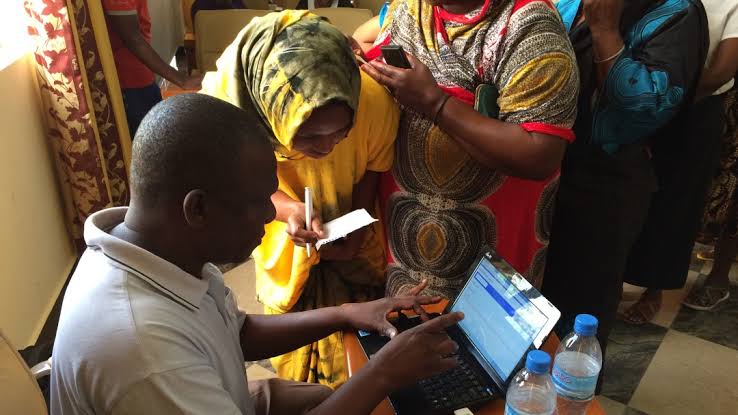Global Issues
Strategic Purchasing: A Key Component in Achieving Universal Health Coverage -By Oreoluwa Olukorode
In summary, strategic purchasing is an important component of achieving universal health coverage. It provides a framework to optimize the allocation of resources, improve service delivery, and move us closer to the goal of universal health coverage. Policymakers must consider it as part of a comprehensive approach to improving health systems and ensuring access to quality healthcare for all.

Strategic purchasing can be applied to everyday life and personal finances in many ways, as well as to various sectors of the economy. For example, people use strategic purchasing when grocery shopping by making a list of what they need, comparing prices of different vendors, and choosing the most cost-effective options. Even when making larger, more significant purchases, individuals strive to make the most of their financial resources through strategic purchasing.
Moreover, strategic purchasing is a common practice in many sectors, such as manufacturing, agriculture, and healthcare. It allows organizations to optimize their procurement processes, negotiate better deals with suppliers, and ultimately saving costs.
Since the release of the World Health Report 2000, healthcare purchasers -governmental organisations and private entities- in most countries have come to realize that health financing entails more than just raising funds. Instead, it encompasses three essential roles: generating revenue, pooling resources, and making purchases. For low- and middle-income countries, making purchases is critical and must be carefully thought out because government funding for health often does not keep pace with commitments to achieving universal health coverage.
Strategic purchasing in healthcare is the process of allocating resources to health service providers who can deliver high-quality care at a reasonable cost while ensuring that efficiency and equity are maintained. It involves a continuous pursuit of optimal methods to enhance health system performance by deciding which interventions should be purchased, from whom they should be purchased, and how to purchase them.
For example, if the government as a purchaser is looking to buy vaccines to prevent the spread of a particular infectious disease, they would need to determine which vaccines are most effective and efficient in preventing the disease. This would involve reviewing the latest scientific evidence and consulting with experts in the field -what to purchase.
The government would then need to identify potential suppliers of this vaccine. This would involve carefully screening different suppliers, as well as considering factors such as price, delivery time, and the availability of technical support -from whom to purchase from.
Lastly, the government would need to decide on the procurement method that would be most appropriate for purchasing the vaccines. It could be a competitive bidding process where bids are solicited from multiple vaccine manufacturers and the supplier with the best value proposition is selected, or purchasing through international organisations like the WHO or UNICEF at lower costs. The government would also need to ensure that the procurement process is transparent and accountable and that it adheres to relevant regulations -how to purchase.
Strategic purchasing is said to be a key function in achieving universal health coverage. Countries have found that utilizing all available strategic purchasing tools can be highly effective in maximizing the value of healthcare expenditures.
In Nigeria, certain states have implemented health insurance schemes that incorporate the gatekeeper system of care. Under this system, patients are required to initially visit a primary healthcare center and obtain a referral to a higher-level or specialized facility if necessary. This approach aims to effectively manage costs, guarantee that patients receive care in the appropriate setting, and strengthen the primary healthcare system as a whole. In cases where patients want to seek care directly from specialized facilities without a referral, they must bear a greater financial burden by paying more out of pocket. This arrangement strikes a balance between patient choice and strategic cost control.
The introduction of capitation payments revolutionized Ghana’s health insurance scheme, transforming the way providers were compensated. Previously, providers were paid for each service rendered, regardless of its necessity or effectiveness, leading to an alarming provision of unnecessary treatments solely aimed at maximizing profit. This dangerous practice resulted in rapid inflation of costs, jeopardizing the overall financial sustainability of the NHIS. To illustrate further, a bill for a cesarean section could include a charge for as many as 30 latex surgical gloves. This quantity of gloves utilized varied significantly from one hospital to another, with no standardized requirement for the procedure. Recognizing the need for change, stakeholders decided to prescribe what was permissible, based on information and evidence gathered on performing cesarean sections. Consequently, hospitals were given a standard guideline to follow, thereby ensuring a more accountable and transparent system.
Strategic purchasing is a complex process that even when there is a desire to be more strategic, there is often a lack of knowledge about how to do this effectively. There are also many technical aspects to it, but a fundamental building block is information — accurate and up-to-date information systems. To address this, more countries can leverage access to direct technical assistance from global partners like the World Bank, the World Health Organization, and the USAID’s Health Finance and Governance Project where they can receive guidance and expertise in strategic purchasing. These global partners have extensive experience in supporting countries in developing and implementing strategic purchasing mechanisms. They can provide technical assistance in various areas, such as designing payment models, conducting health technology assessments, establishing performance-based contracting, and strengthening information systems.
Additionally, extensive research, such as case studies conducted by the Resilient and Responsive Health Systems Consortium provides insights into the strategic purchasing outcomes in low- and middle-income countries and can serve as a guide for other countries.
Finally, countries can learn from their own experiences by monitoring and evaluating the implementation of their health policies and programs, and making adjustments as needed to improve their strategic purchasing practices.
In summary, strategic purchasing is an important component of achieving universal health coverage. It provides a framework to optimize the allocation of resources, improve service delivery, and move us closer to the goal of universal health coverage. Policymakers must consider it as part of a comprehensive approach to improving health systems and ensuring access to quality healthcare for all.




















